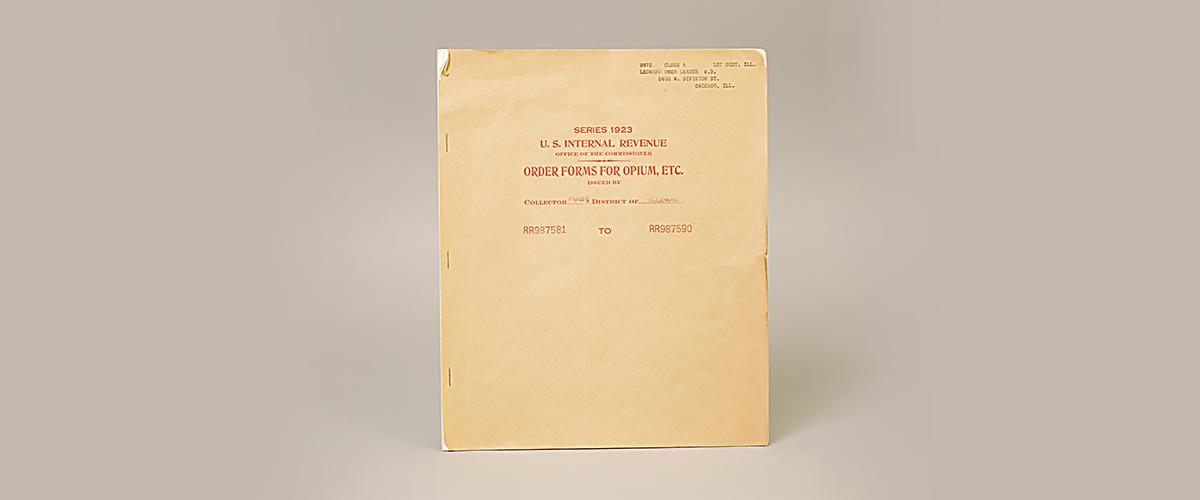Opium Order Form

Accession Number:
2020.40.2Decades before DEA’s founding, Congress passed the Harrison Narcotics Act in 1914, which required narcotics manufacturers, sellers, and distributors to register with the Bureau of Internal Revenue under the U.S. Treasury Department. The act was the first comprehensive law in the U.S. to regulate whole classes of drugs.
At the time, international meetings were convened to call for stronger drug controls. Leaders from China and the United States were especially concerned about the unregulated production, trade, and use of opium, a highly addictive narcotic that comes from poppy plants. The Harrison Narcotics Act made it harder to get opium without a prescription from a registered medical professional.
New, specially-trained employees enforced the law. In 1919, Congress passed the Volstead Act, which created the Prohibition Unit within the Treasury Department. A part of the Prohibition Unit called the Narcotics Division was specifically tasked to enforce the Harrison Act. Narcotics agents ensured that doctors registered the drugs they prescribed and used in their practice.
Around the time of the Volstead Act, the public’s view of addiction changed. Increased non-medical drug use as well as racial, ethnic, and class prejudice affected public opinion. What had been a medical condition became “deviant” or “criminal.” This shift led to a wave of laws against heroin, marijuana, and cocaine. In 1930, Congress authorized a new federal drug law enforcement agency, the Federal Bureau of Narcotics, or the FBN, to enforce these laws. This agency is a predecessor of DEA.
FBN agents still operated under the Treasury Department and processed order forms like this one to document the sale and possession of substances regulated by the Harrison Narcotics Act. Doctors, pharmacists, and other professionals registered with the government could fill out the form to purchase the drugs they needed for their businesses. Only registered importers, manufacturers, producers, or wholesale dealers could fulfill the order. In this case, a doctor named Leonard Leader ordered tablets from the pharmaceutical company Hoffman-La Roche, Inc., in 1932.
These documents tracked the supply and sale of products with opium, coca, and other drugs. They also served as a record for the Internal Revenue Service to tax related transactions. In the early 20th century, the government relied on taxation and registration to regulate drug use.
Click here to view this artifact’s episode of “Stories from the Collection,” a monthly video series on the DEA Museum’s most exciting objects.


